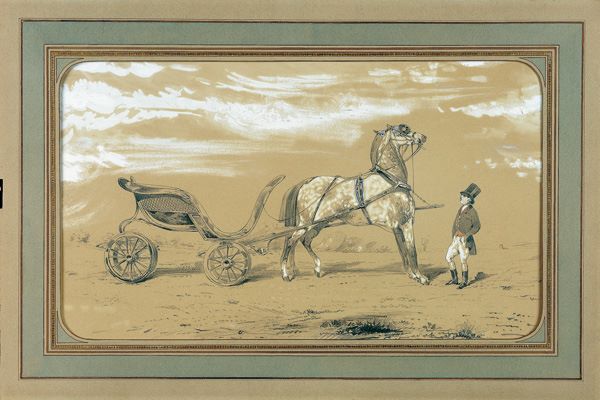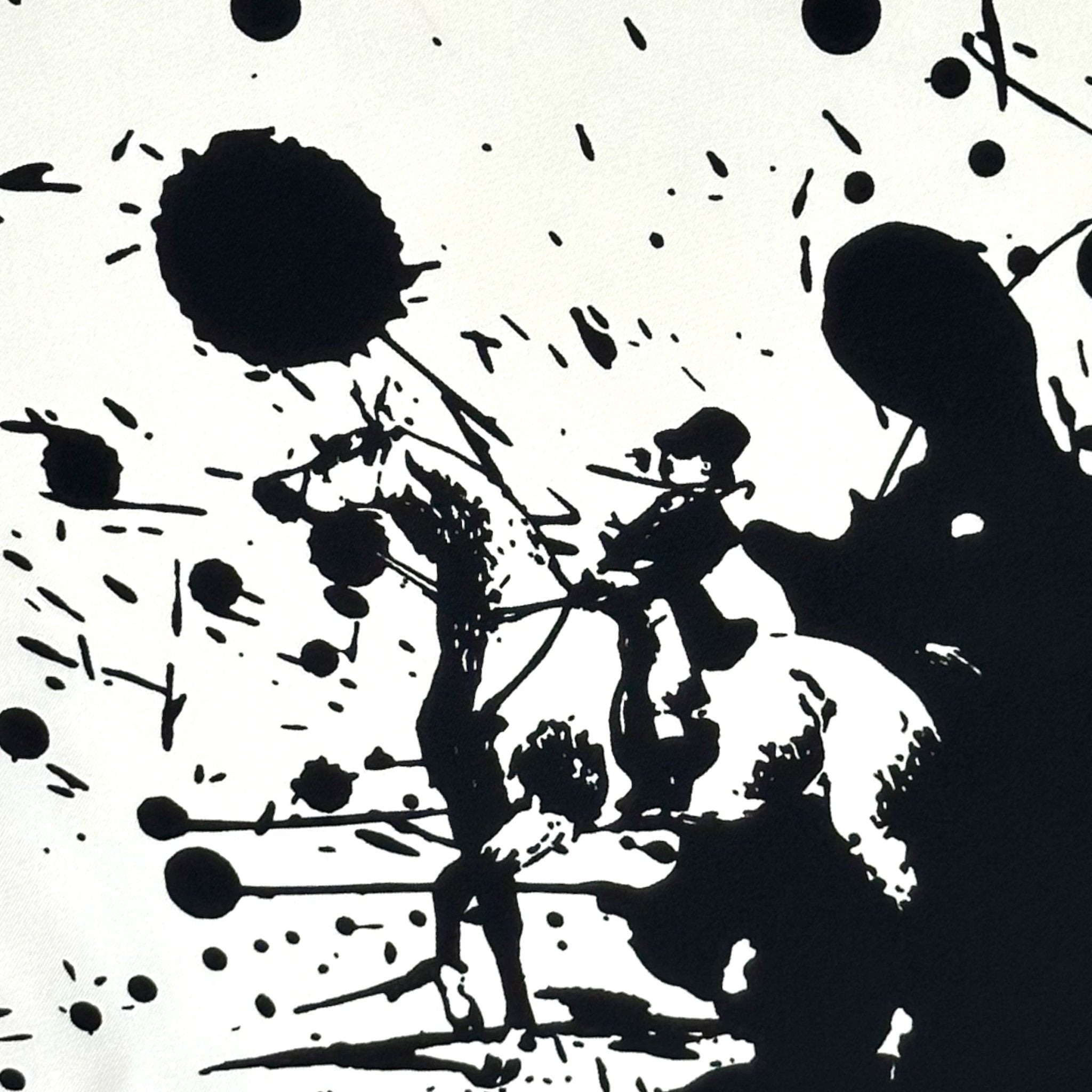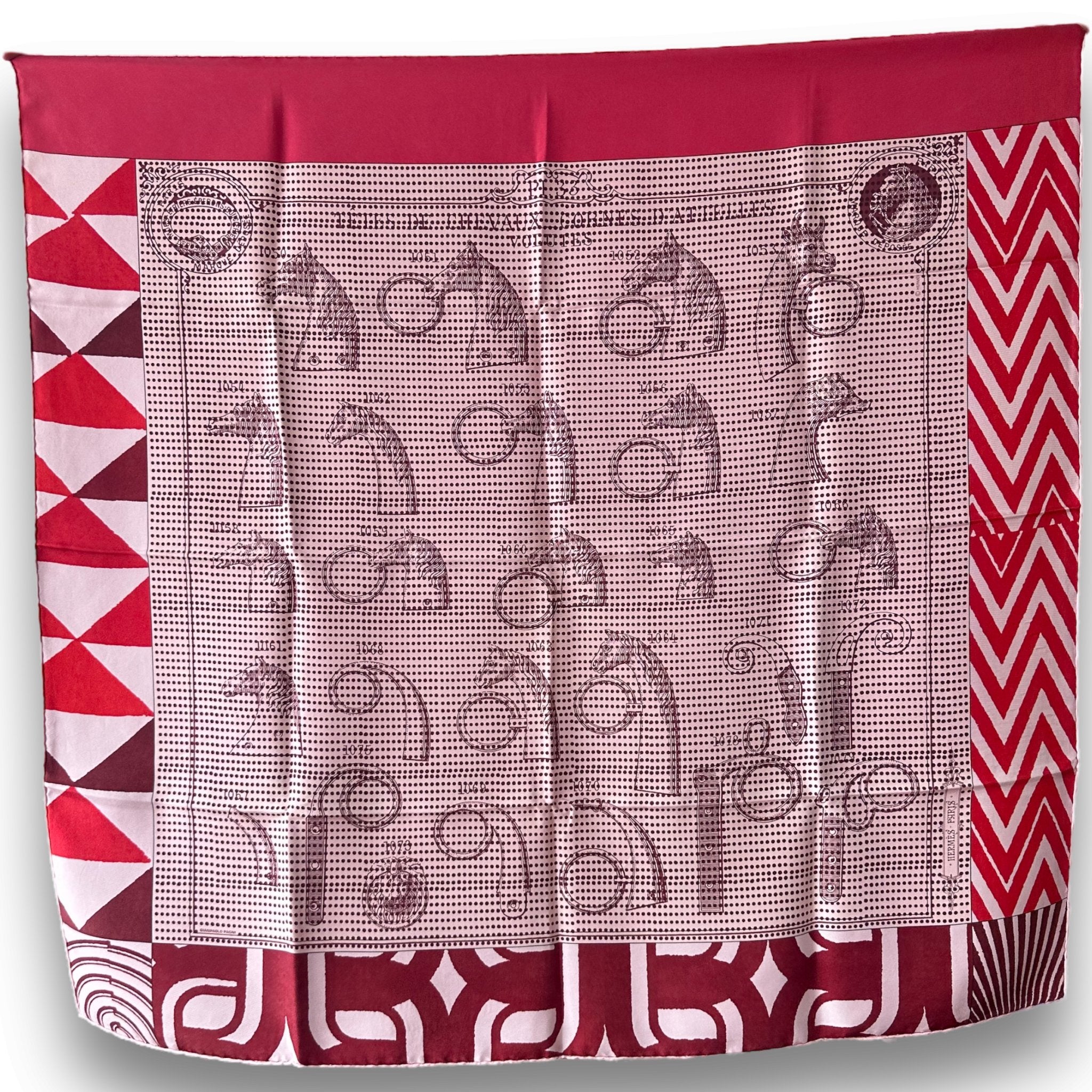
Hugo Grygkar: the father of Carré Hermès
When talking about Carrés Hermès, it is impossible not to mention Hugo Grygkar. This talented artist played a vital role in their creation.
In 1937, he designed the brand's first Carré ( Jeu des Omnibus and Dames Blanches ) and remains its most prolific artist to this day.
Son of a Czech bronze sculptor living in Germany Hugo Grygkar was born in Munich on December 9, 1907. From an early age he frequented his father's studio. In 1914 his family moved to Brittany and then quickly to the suburbs of Paris. After studying at the Academy of Fine Arts in Paris, he attended the Residence La Ruche located rue de Dantzig in the 15th arrondissement where all the artists of Montparnasse met, lived and exhibited at the time.
In 1939, he and his father joined the French army by enlisting in a regiment made up of Czech volunteers. A few months later he was demobilized due to a kidney disease from which he suffered all his life. His commitment will enable him to obtain French nationality.
At the end of the war, while continuing his work within the Maison Hermès, he will be an illustrator of children's books, advertising poster designer, cartoonist for magazines such as Vogue.
In the 1940s, he created a number of emblematic Carrés for the Maison Hermès, which were very popular with fashion lovers and collectors, in particular the famous Bookplate in 1946.
Hugo Grygkar's style is characterized by an innate sense of framing, composition and color harmony, but also by great culture and a humor of great finesse.
He quickly became the main artist of the fashion department of the Maison Hermès and worked for more than 20 years in close collaboration with Robert Dumas, the Director of Hermès, who guided him in the choice of subjects by giving him access to his personal archives. as well as those of Emile-Maurice Hermès. Robert Dumas appreciated the talent but also the modesty and flexibility of Hugo Grygkar who knew how to adapt to his demands. The two men also shared a mutual respect, attention to detail and love of a job well done.
He designed more than 100 Hermès squares, giving birth to timeless models that have survived to this day, including the famous Gala brides And Bookplates .
Floralies , published in 1959, will be his last creation since he died on February 22, 1959 as a result of his chronic kidney disease.
Hugo Grygkar helped shape the identity of the Hermès brand and his creations are still regularly reissued to the delight of amateurs and collectors. They continue to inspire the brand's new generation of designers who do not hesitate to reinterpret or revisit its iconic models.
Discover the world of Hermès scarves
CARRÉMENT HERMÈS !
Histoires, inspirations et secrets autour des foulards Hermès

Qui n'a pas son "Brides de gala" ?
Découvrez l'histoire fascinante du carré "Brides de Gala" d'Hermès, créé en 1957 par Hugo Grygkar, et comment ce motif emblématique continue de se réinventer depuis près de 70 ans.
Read more
Plongez dans l'histoire riche et fascinante des Concours d'Élégance à la Française, une tradition prestigieuse qui remonte au XVIIe siècle.
Read more
Collectionner les foulards Hermès : "Les cantinières en 1860" - 1953
Pour dessiner ce Carré Hermès qui date de 1953, J.B. Jannot s’est très certainement inspiré d’une collection de gravures colorées de 1859 réalisée par l'artiste français Hippolyte Lalaisse..
Read more
The Duke Attelé by Alfred de Dreux - History of the Hermès logo
History of the Hermès logo
Read more
Surprise Horse drawn by Dimitri Rybaltchenko: A game of hide and seek in the carousel
Cheval Surprise , a Carré Hermès which perfectly illustrates the fantasy and humor of Dimitri Rybaltchenko .
Read more